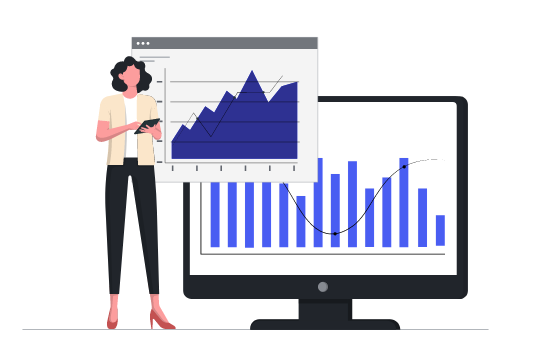 In the real world, traffic travels on land, sea, and air – and yes, for the purists among you, sometimes in space.
In the real world, traffic travels on land, sea, and air – and yes, for the purists among you, sometimes in space.
The Internet, on the other hand, is described with a number of very weak metaphors. It’s the information superhighway! It’s a series of tubes!
Fortunately, while our metaphors for the infrastructure of the Internet are…lacking, our descriptions of website traffic are not. They are quite specific. There are some types of traffic that are better for certain purposes than others. Let’s start by taking a look at the types of website traffic – then we can tackle what purposes they serve.
The 5 Types of Website Traffic
Broadly speaking, there are 5 types of website traffic. They are:
- Direct
- Organic
- Paid
- Referral
- Social
Let’s dive into what each of these types of traffic looks like, and what they’re good for:
Direct traffic
Direct traffic is all traffic that comes to the website from users who navigated directly to your URL.
This type of traffic is actually pretty rare. Back in the day, a lot of a website’s traffic was direct – not so in the age of search engines. Most of us use Google Chrome, and it’s often faster to punch in a few letters of the website you want to reach and search than it is to type in their whole URL.
That means a lot of the direct traffic you’re going to get comes from customers whose address bar autofills to your page. That means direct traffic is usually from your advocates – users who love your site, and use it regularly. Large companies like Google and Amazon can also expect a lot of direct traffic.
In other words, direct traffic comes from users who are already aware of your company – and it usually comes from users who know what to expect. This is not the acquisition portion of your funnel, but lots of direct traffic can often mean strong brand loyalty.
Organic traffic


That means that if you’re not ranking well in search engines, you’re losing out on over half of your potential web traffic. Organic traffic is absolutely essential if you want to grow your business, and the only way to grow organic traffic is through SEO.
Search engine optimization (SEO) is really all about making your website better – for users and for Googlebot. That means more relevant content, an easier-to-navigate website, and creating connections with other websites relevant to your users.
Innovative AI-enhanced link building can help improve organic rankings by automating outreach and content creation.
PPC traffic
Pay-per-click (PPC) traffic is any kind of traffic you’re getting from ad networks. This might be Google Ads, Facebook Ads, or any other ad network.
PPC traffic is useful – according to that same BrightEdge study, paid search traffic alone accounts for about 15% of web traffic. PPC is also incredibly easy to track – you’ll know exactly how much you’re spending, what you’re getting for your money, and what your ROI is.
Referral traffic
Referral traffic is any traffic that comes from websites that aren’t social media or search engines. If you’ve got a lot of referral traffic, it means that other websites are linking to yours – and that can be a very good thing! Google looks at the number (and quality) of links you get to help determine your ranking. That means a lot of referral traffic can lead to more organic traffic.
You want to be careful, though – not all referral traffic is good! When referral traffic comes from spammy domains, you can end up taking a hit to your search engine ranking – and that can lead to getting less organic traffic.
Developing referral traffic is kind of like developing word of mouth. If you’ve got a good website, a good product, and you work on building good relationships with your community, good websites will be more likely to link to yours.
Social media traffic
This one is the most self-explanatory. When links to your site are shared on social media, they can generate social media traffic. If you’ve got a highly-developed social media presence, you can expect a lot of this traffic to come from your own pages!
Social media traffic is the third most common type of traffic, with search (paid and organic) and direct being the first and second most common types. While for most niches, it’s better to focus on search traffic, businesses who can create stunning visuals tend to do well on social media.
Other Types of Website Traffic
There are types of traffic that fall outside the Big 5 we’ve listed here: If you’ve got some voracious readers in your email list, emails can help you generate traffic. You can also get a specific type of referral traffic from affiliate marketing – though if you’re not Amazon, that type of traffic probably isn’t very relevant to your business.
First Rank is a Canadian SEO agency. That means we help your business get what we consider to be the most valuable type of traffic: organic traffic. Organic traffic can help boost other types of traffic, too. Want to learn more? Get in touch with us!


